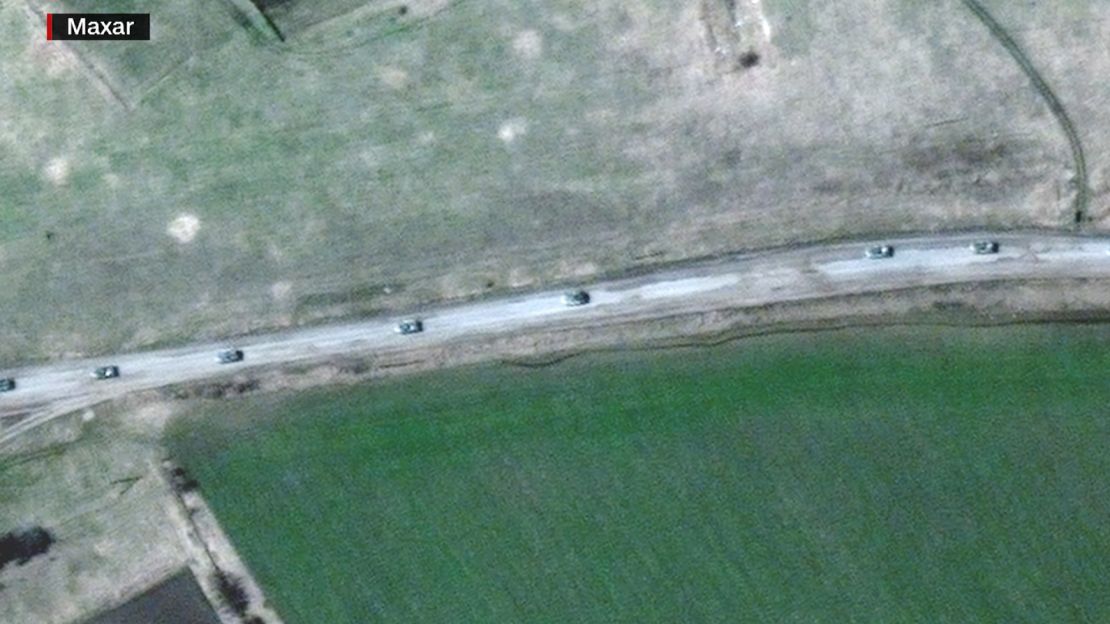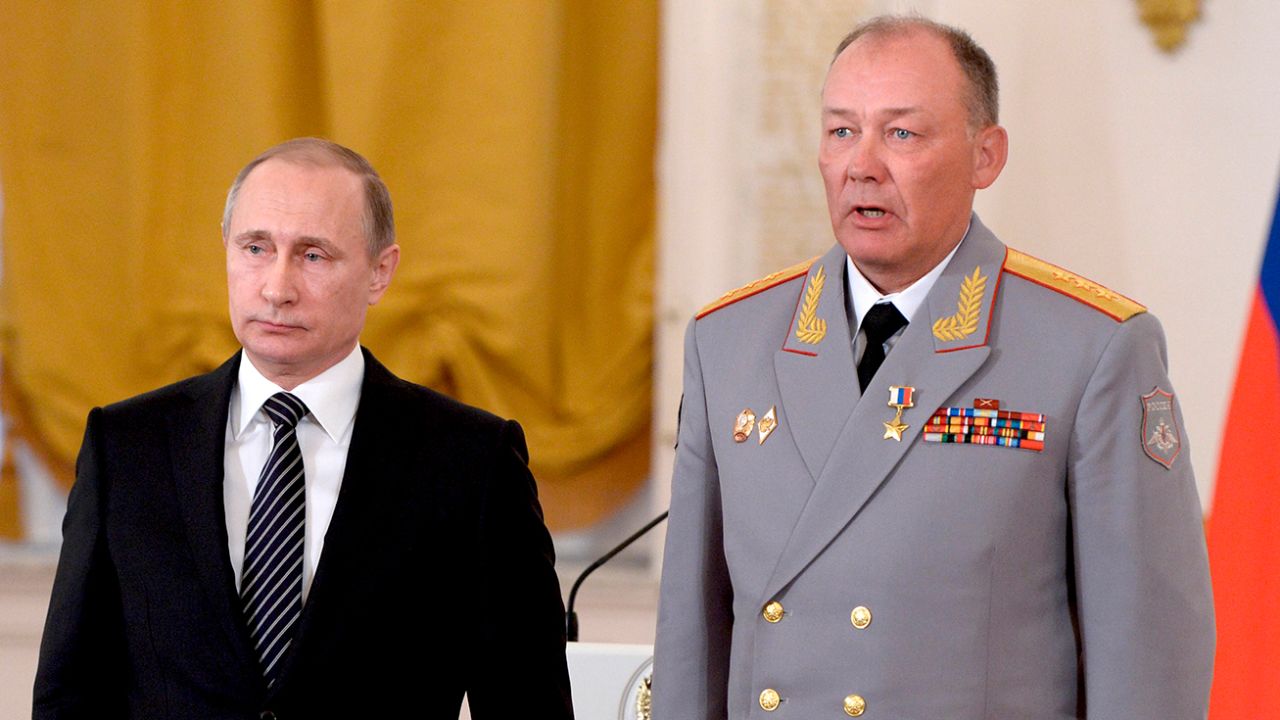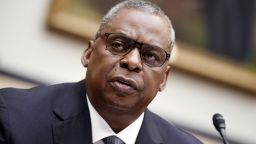Russian President Vladimir Putin has a new general overseeing his war in Ukraine, and his military commanders are signaling a new phase in the war: an all-out effort to take and hold the portions of Ukraine’s Donbas region still under Ukrainian control.
Ukrainians seem to be taking that threat at face value. In the eastern Donetsk and Luhansk regions, local officials have been urging many communities to evacuate, opening up humanitarian corridors for civilians to leave for safer parts of Ukraine.
In northeastern Kharkiv region, authorities are evacuating the towns of Barvinkove and Lozova. In Dnipro, a regional capital in east-central Ukraine, the mayor, Borys Filatov, has requested that women, children and the elderly leave.
“The situation is gradually heating up in Donbas, and we understand that April will be quite hot,” Filatov said recently. “Therefore, a huge request: Everyone who has the opportunity (as I have said repeatedly) to leave – first of all, this applies to women, children, and older people who are not involved in the work of critical infrastructure.”

Can Russia mount a terrifying new offensive in the east? The latest satellite images collected and analyzed by Maxar Technologies show an 8-mile-long Russian military convoy making its south through the eastern Ukraine town of Velkyi Burluk, to the east of the city of Kharkiv.
In remarks on national television Saturday, Vadym Denysenko, an adviser to Ukraine’s Interior Minister, said Kharkiv was “being shelled practically all day long” and that a Russian offensive was expected in the Kharkiv region, from the direction of Izium.
Military experts and western officials have also speculated that Putin’s generals are feeling the pressure to deliver some sort of results ahead of May 9, when Russia marks Victory Day, the defeat of Nazi Germany in 1945. But a fresh analysis from the Institute for the Study of War (ISW), a US-based think tank, casts some doubt on Russia’s ability to concentrate the forces needed to make a breakthrough in the Donbas.
“We assess that the Russian military will struggle to amass a large and combat-capable force of mechanized units to operate in Donbas within the next few months,” the analysis states. “Russia will likely continue to throw badly damaged and partially reconstituted units piecemeal into offensive operations that make limited gains at great cost.”
Military analysts and observers say Russia may struggle to reorganize forces that have been battered by the Ukrainian military, particularly in the defense of Kyiv and northern Ukraine.
Before the invasion, Russia had arrayed approximately 120 battalion tactical groups around Ukraine. According to one European official, about a quarter of those forces are “effectively inoperable” after heavy casualties and the destruction of hardware. A US defense official on April 8 gave a slightly different estimate, saying Russian forces were now “below 85 percent of their assessed available combat power” assembled ahead of the February 24 invasion.
Those US defense estimates, ISW said, “unintentionally exaggerate the Russian military’s current capabilities to fight.”
According to ISW, “the dozens of Russian battalion tactical groups (BTGs) that retreated from around Kyiv likely possess combat power that is a fraction of what the numbers of units or total numbers of personnel with those units would suggest. Russian units that have fought in Ukraine have taken fearful damage.”
A commander with a track record of brutality
Army General Alexander Dvornikov, the commander of Russia’s Southern Military District, has been named as theater commander of Russia’s military campaign in Ukraine, according to a US official and a European official.
Dvornikov, 60, was the first commander of Russia’s military operations in Syria, after Putin sent troops there in September 2015 to back the government of Syrian President Bashar al-Assad.
During Dvornikov’s command in Syria from September 2015 to June 2016, Russian aircraft backed the Assad regime and its allies as they laid siege to rebel-held eastern Aleppo, bombarding densely populated neighborhoods and causing major civilian casualties. The city fell to Syrian government forces in December 2016.
From 2000 to 2003 Dvornikov served in Russia’s lengthy pacification campaign in the north Caucasus, including the Second Chechen War, which left the regional capital of Chechnya, Grozny, in ruins.
Russian forces have used a similarly heavy-handed approach in parts of Ukraine, striking residential buildings in major cities and demolishing much of the Ukrainian port city of Mariupol.
Dvornikov was awarded the title of “Hero the Russian Federation” by the Kremlin in March 2016 for his services.
The appointment of a new overall commander to lead Russia’s war in Ukraine appears to be an effort to remedy another problem that has hampered Russian forces: lack of coordination.
“The Russians are apparently attempting to resolve one of the problems from which their initial invasion suffered by making Southern Military District Commander General Alexander Dvornikov the single overall commander of operations in Ukraine,” ISW stated.
“This simplification of the Russian command structure may not resolve all of Russia’s command problems, however… Russian forces will likely continue to struggle to establish coherent and efficient command and control arrangements for the foreseeable future.”
That doesn’t mean the coming weeks will be easy for Ukrainian forces fighting in the east. ISW said Russia’s military “likely will make gains nevertheless and may either trap or wear down Ukrainian forces enough to secure much of Donetsk and Luhansk Oblasts, but it is at least equally likely that these Russian offensives will culminate before reaching their objectives, as similar Russian operations have done.”
In remarks Sunday, Ukrainian presidential adviser Mykhailo Podolyak said Ukraine was prepared for intense fighting.
“Ukraine is ready for big battles,” said Podolyak. “Ukraine must win them, particularly in Donbas. And after that, Ukraine will get a more powerful negotiating position, from which it can dictate certain conditions. After that, the presidents [of Ukraine and Russia] will meet. That may take two or three weeks.”
The next weeks may prove if that is an overly optimistic scenario. But it presents what appears to be a negotiating position, as much as a military assessment: Putin can talk now, or risk being significantly weaker later.






